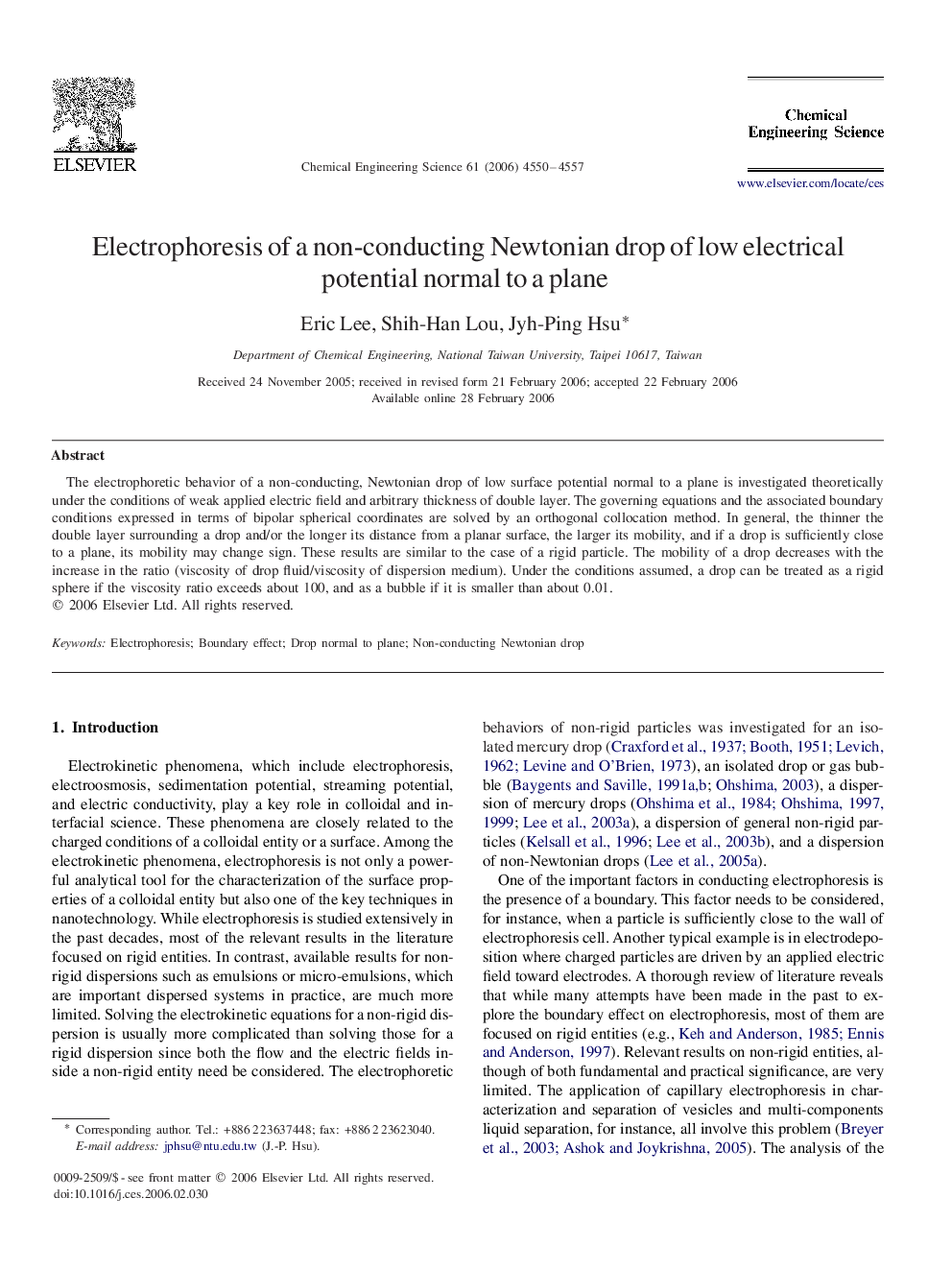| Article ID | Journal | Published Year | Pages | File Type |
|---|---|---|---|---|
| 158708 | Chemical Engineering Science | 2006 | 8 Pages |
The electrophoretic behavior of a non-conducting, Newtonian drop of low surface potential normal to a plane is investigated theoretically under the conditions of weak applied electric field and arbitrary thickness of double layer. The governing equations and the associated boundary conditions expressed in terms of bipolar spherical coordinates are solved by an orthogonal collocation method. In general, the thinner the double layer surrounding a drop and/or the longer its distance from a planar surface, the larger its mobility, and if a drop is sufficiently close to a plane, its mobility may change sign. These results are similar to the case of a rigid particle. The mobility of a drop decreases with the increase in the ratio (viscosity of drop fluid/viscosity of dispersion medium). Under the conditions assumed, a drop can be treated as a rigid sphere if the viscosity ratio exceeds about 100, and as a bubble if it is smaller than about 0.01.
